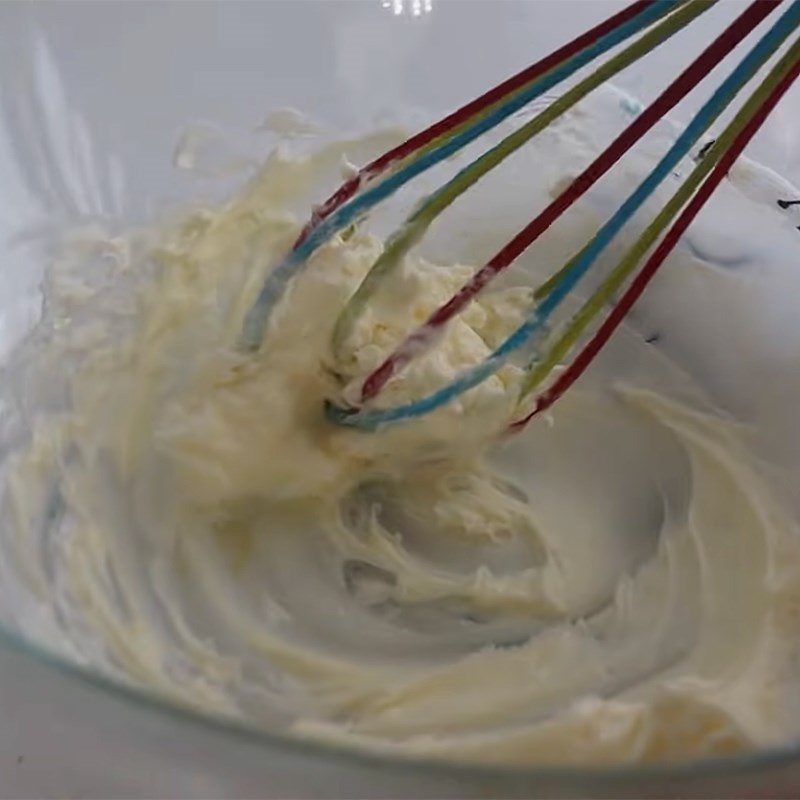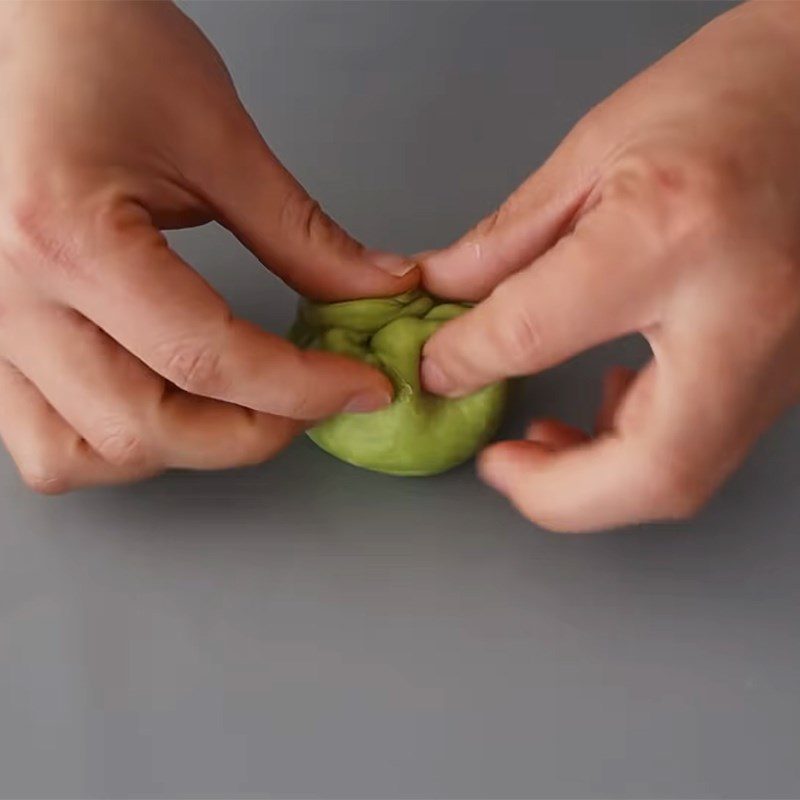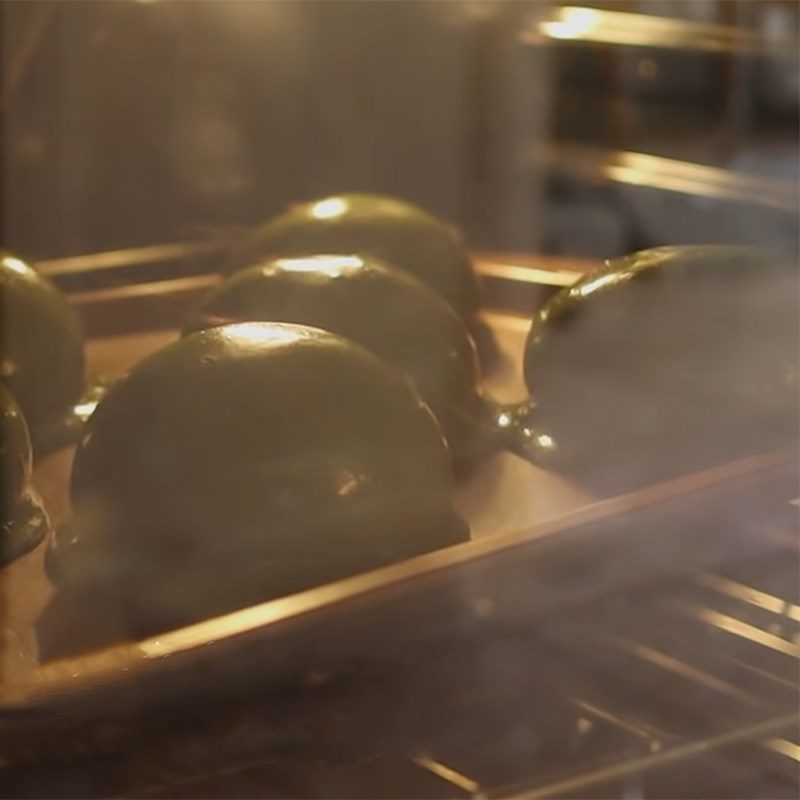-
Preparation
1 hour 30 minutes
-
Cooking
20 minutes
-
Difficulty
Medium
Papparoti is a pastry popular in Vietnam for its distinctive buttery aroma with a sweet outer layer and a rich filling. Now, it’s not just the traditional traditional papparoti, but Tastetutorial.com will bring you green tea papparoti – matcha papparoti with an incredibly unique and delicious flavor. Let’s get cooking right away!
Ingredients for Green Tea Papparoti For 8 pieces
Bread flour 250 gr Cake flour 50 gr Japanese green tea powder 7 teaspoons (matcha powder) Unsalted butter 85 gr (at room temperature) Eggs 2 pieces (about 55gr/each) Instant dry yeast 1 teaspoon Milk 1/2 tablespoon Granulated sugar 30 gr Powdered sugar 50 gr Cold water 115 ml Cooking oil a little Salt 1/2 teaspoon
What is bread flour and cake flour?
Bread flour
- Bread flour (also known as type 13 flour) is a type of flour made from wheat and has a higher protein content compared to other types of flour, ranging from 12 – 14%.
- When baking, the high protein content in the flour combines with yeast to create the chewiness of the bread, which is why it is used to make various types of bread, pizza, or dumplings.
Cake flour
- Cake flour has a very low protein content, ranging from 7 – 8.5%, therefore it contains very few gluten strands.
- The flour is pure white, moist, and lighter compared to other types of flour, which is why this type of flour is often used to make cakes with a thin, smooth, and airy texture such as sponge or chiffon.
What is matcha powder? How to distinguish between matcha powder and green tea powder
- Matcha is a powder made from young green tea buds from Japan. Through many complex processing stages, it results in very fine matcha powder with high nutritional value.
- Matcha powder is bright green while green tea powder has a dark green color with a slight yellowish tint.
- Matcha powder is soft and completely dissolves in water (especially hot water), initially tasting bitter on the tip of the tongue followed by a sweet aftertaste, while green tea powder has little to no sweetness and has a bitter astringent taste.

Tools needed
Oven, egg beater, sieve, spoon, mixing bowl,…
How to make Matcha Papparoti
-
Mix flour, matcha, eggs, and milk
First, add 105ml of cold water and 1 teaspoon of instant yeast into a mixing bowl. Then, gradually add 250gr of finely sifted bread flour, 30gr of granulated sugar, 4 teaspoons of Japanese green tea powder, and crack in 1 egg.
Use a flat whisk to mix all the ingredients together, then use the egg beater (with the dough hook attachment for bread dough) to beat at low speed.
At this point, while beating, gradually add the remaining 10ml of water into the bowl. Increase the speed to high and continue beating until the dough forms a cohesive, elastic, and sticky mass.




-
Knead with butter and let the dough rise
Add 1/2 teaspoon of salt and 25g of unsalted butter into the mixing bowl. Start using the mixer at low speed, then gradually increase to high speed until the butter and salt are completely blended.
After mixing, if you pull the dough into a thin film without tearing, it means the dough is ready.
Brush a thin layer of oil on the bowl’s surface and around the dough to prevent sticking, then place the dough into the bowl and cover it tightly with plastic wrap.
You let the dough rise in a warm place for about 1 hour until it doubles in size compared to its original size.




-
Make the matcha cream layer
Put the remaining 60g of unsalted butter into a large bowl, and use a whisk to beat the butter until fluffy and soft. Add 50g of sifted powdered sugar into the bowl and mix until the sugar dissolves.
Next, beat 1 egg, add it gradually into the bowl, and continue mixing until they blend together to form a lumpy mixture.
Sift 50g of cake flour and 3 teaspoons of Japanese green tea powder into the bowl, and mix well with a flat whisk. Finally, add 1/2 tablespoon of fresh milk and mix until they form a smooth, creamy topping.
Transfer the cream topping into a piping bag, twist the end of the bag tightly, and set it aside.




-
Dough dividing and second proofing
Once the dough has finished proofing, use your hands to press the dough down flat, dividing it into 8 equal parts.
Next, shape each piece of dough by folding the edges in and pinching them together to form a smooth, round dough ball.
Arrange the dough balls neatly and cover them with plastic wrap, letting the dough rest for 15 minutes. After that, place the dough on a baking tray, continue to cover with plastic wrap, and proceed to proof the dough a second time for 50 minutes.
Tip: You can check if the dough is ready by pressing one finger deep into the dough; if the indentation remains, the dough is ready. If the dough springs back, it means it needs more proofing time.



-
Apply matcha cream and bake
Cut the tip of the cream bag, pipe the cream in a spiral shape to cover about half of the dough ball, do not cover completely as the cream will run down while baking.
While piping the cream, take the opportunity to preheat the oven to 180 degrees Celsius for 10 minutes!
Place the baking tray in the preheated oven, bake at 180 degrees Celsius for 15 – 18 minutes until the top of the cake is evenly cooked.
Tip: You can cover the surface of the cake with a layer of aluminum foil during the last 8 minutes of baking to prevent the cake from burning!

-
Final product
The final product results in green papparoti cakes with slightly burnt golden edges. The crust is hard and crispy, breaking it open reveals a soft inside, emanating the fragrant smell of butter and matcha.
Green tea papparoti – matcha papparoti is soft and chewy, with a subtle matcha flavor that is not overly sweet. This will be a very suitable cake for afternoon tea or delicious, creamy snacks that everyone will love!
Tip: If the cake becomes soggy and cold, you can put it back in the oven at 160 degrees Celsius for about 10 minutes to make it crispy and fragrant like new!

Also refer to how to make green tea papparoti with a crispy outer layer and a soft, moist inside, fragrant with the attractive matcha green tea flavor using a really simple recipe. Tastetutorial.com wishes you delicious batches of cakes to enjoy with family and friends!
*Refer to the recipe and images from the YouTube channel Qiong Cooking.





